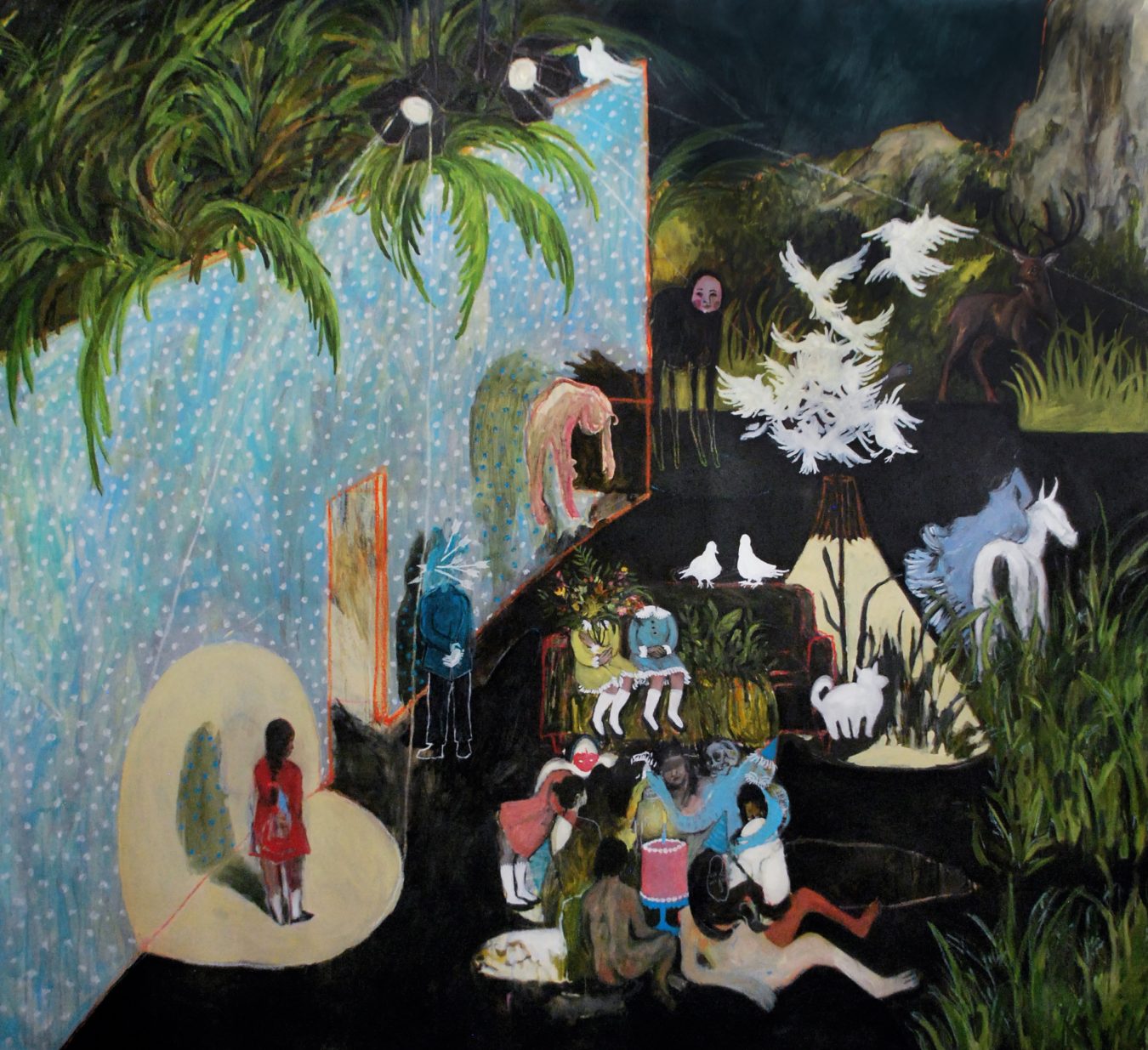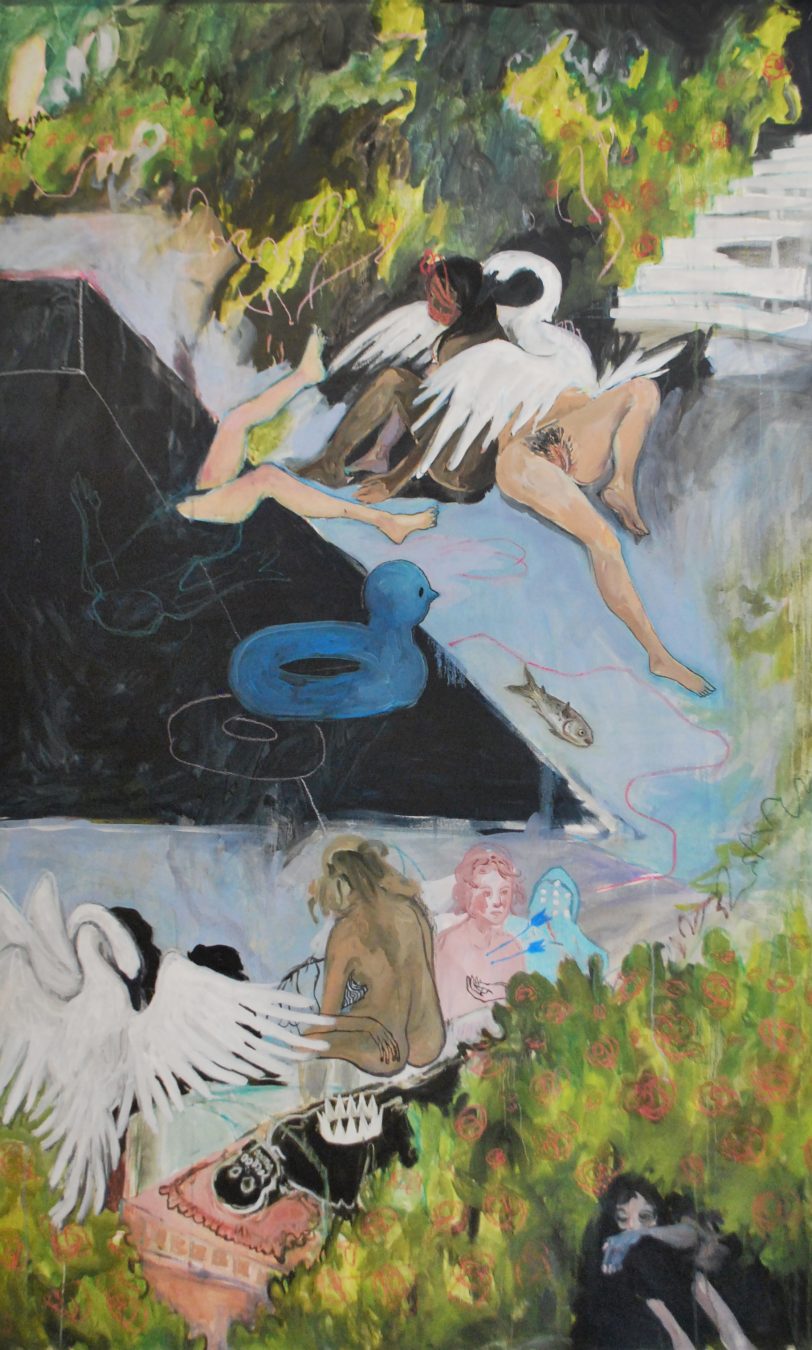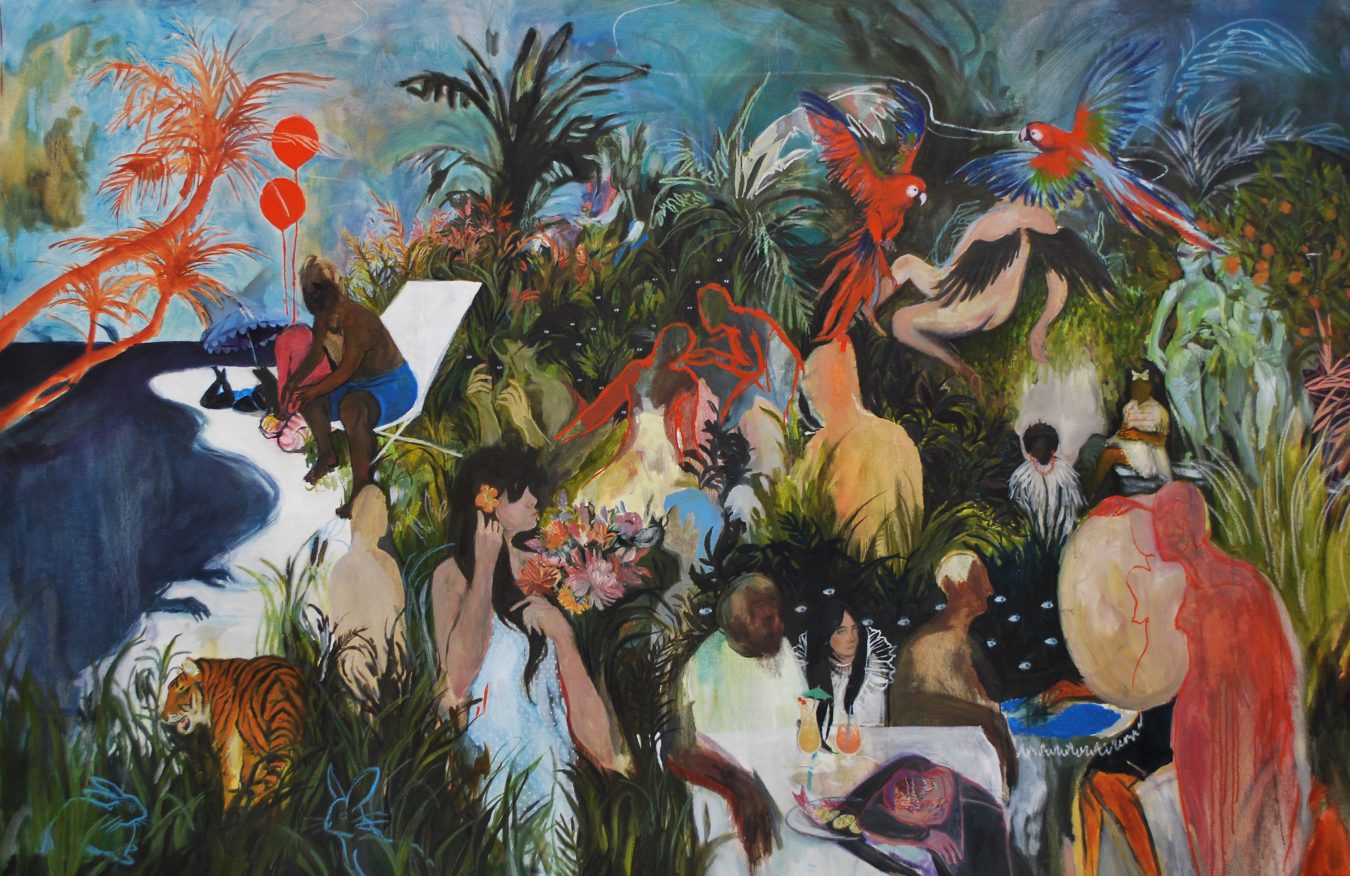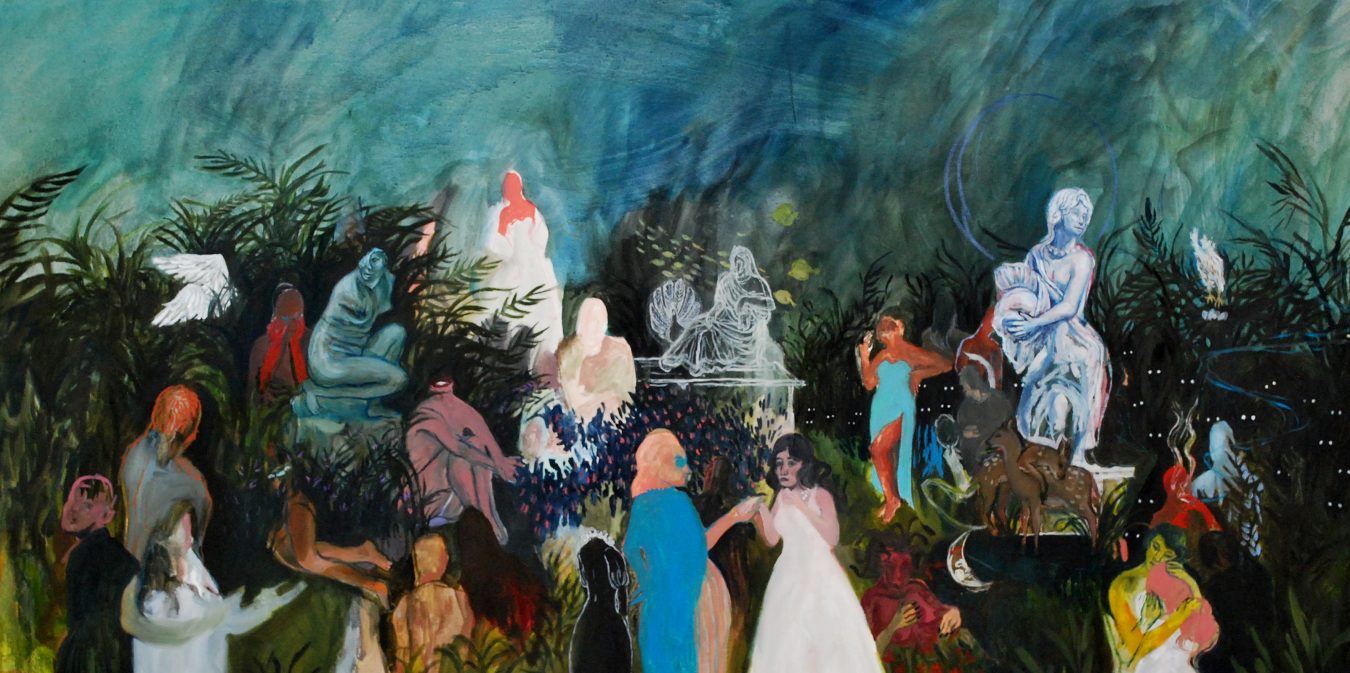Whether an idea is made concrete with paint, clay, or language is a decision that comes naturally to Michelle Nguyen.
Her paintings—the most frequent medium she uses—are large and immersive. Building layers of image with oils, she outlines or emphasizes with chalk pastels, her brush strokes gesturing and implying movement. Literature drives her composition; with an admiration for how writing articulates the subtle feelings that span the human experience, she absorbs words and refracts compositions. “Everything I’ve made has been driven by something I’ve read,” she says. Inspired by the poetic technique of ekphrasis (a vivid description of a work of art), she creates an inversion: art that suggests narrative.
Nguyen’s paintings focus on groups, gatherings, or parties populated by humanoid figures. She plucks her characters from a variety of sources, including Greek mythology, pop culture, and Instagram. Creating based on colour and composition, she arranges party attendees for aesthetic cohesion and leaves their connections as possibilities. The humanoids wear cocktail dresses and suits but mingle outdoors among untamed lashings of greenery. In Floatie in Jade Green, Death lifts a martini and chats up a bikini babe: a piquant memento mori.
Completely self-taught, the Vancouver-based painter, ceramicist, and writer studied environmental design at the University of British Columbia before turning to more traditionally artistic outlets. Since starting on this path, she has participated in four solo shows and an additional five group shows, created a piece for the 2018 Vancouver Mural Festival, and gained representation from Bau Xi Gallery. Though painting people has become her signature, Nguyen was not interested in doing so until she read John Berger’s Ways of Seeing, which discusses traditional European art and its historical purposes: religion or displaying wealth. Nudes are scattered throughout Nguyen’s parties, often alone or ignored. In Ways of Seeing, Berger theorizes on the nude and how she is utilized. The nude is never the protagonist; the protagonist, or viewer, is usually male. In Édouard Manet’s painting The Luncheon on the Grass, two clothed male dandies picnic with a female nude. The men don’t acknowledge her, and she directs her gaze outward to challenge the viewer. Similarly, Nguyen subverts the traditional dynamic and integrates her nudes into scenes simply as additional people. She normalizes their lack of clothing, revokes the correlation between nakedness and vulnerability, and asserts her figures’ positions without the male gaze being necessary or acknowledged. “And in that, the viewer no longer has the power over the subject itself,” she says. “The subject has the power.”
Adding another element to this, Nguyen likes to watch strangers who observe her work in a gallery; the narratives they attribute to her characters allow her, the artist who is gazed upon, a window into their minds. When looking at Nguyen’s work, patrons often verbally “tag” themselves in a scene by choosing a figure to relate to. “The painter gets to know the viewer by who they identify with,” she explains. By tagging oneself in a painting or identifying with a particular character (maybe the elegantly dressed woman sprouting a demon arm in Cassadaga or the woman devoured by butterflies in Gorgoneion), the spectator is given an indirect opportunity to share vulnerable thoughts. Nguyen believes society has an increasing need for empathy, and she tries to create it with her stylized communities of humans, demi-humans, and non-humans. “I love how when people are looking at these humanoids,” she says, “we’re always trying to relate to them in that way and anthropomorphize, personify, and empathize with them.” This act makes relatable what may have first been perceived as foreign.
Perhaps through these partygoers and their malleable narratives, Nguyen can encourage compassion and balance. She watches viewers engage with her work before producing something new, because her paintings aren’t for herself—rather, they are fragments she adds to the world’s composition. Success, to her, is standing in front of a completed canvas hung on the wall and finding fresh potential for insight and connection, over and over again.
Read more from the Arts.














